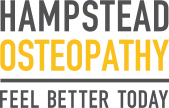Shoulder Pain and Osteopathic Rehabilitation
Shoulder pain is a complex problem. It often stems from the unique structure and mobility of the joint. Trauma, repetitive strain, or chronic issues like frozen shoulder (adhesive capsulitis) can cause it. Consequently, shoulder pain can severely limit your movement and quality of life.
At our clinic, we provide effective, evidence-based treatment. Specifically, we accurately diagnose the root cause of your shoulder injury. Then, we guide you through successful rehabilitation.
This article explains the shoulder’s anatomy. Furthermore, it details common reasons for pain. Finally, it outlines how osteopathy can help you regain stability and function.
(Ready to see a specialist? Click “Book Treatment” in the menu above.)
Understanding “The Shoulder”
The shoulder is not just one joint; rather, it is a complex of four distinct articulations. They work together for incredible mobility. The main part is the gleno-humeral joint (the “ball and socket”). However, its movement relies on the sternoclavicular, acromioclavicular, and scapulothoracic joints.
Muscular integrity is key for good function and stability. Therefore, the rotator cuff muscles are especially important. They guide and position the upper arm in its socket.
Common Causes of Shoulder Pain
We regularly treat patients for many types of shoulder injuries. Below are the most common conditions we address:
- Acute Rotator Cuff Injuries (Tears and Tendinopathies)
- Frozen Shoulder (Adhesive Capsulitis)
- Dislocated Shoulder (or chronic instability)
- Pain over the Top of the Shoulder (AC Joint Injuries)
Rotator Cuff Pain
The rotator cuff is a group of four primary muscles. Essentially, they stabilize your upper arm. Consequently, shoulder pain here is often a rotator cuff tendinopathy. It might also be called impingement, tendinitis, or sub-acromial pain.
Causes & Symptoms:
- Inflammation (tendinitis/bursitis) can lead to a “pinching” or impingement.
- Tears result from trauma, like a fall. Similarly, repetitive sports movements can also cause tears. Wear-and-tear is likewise a common cause.
- Symptoms include: Pain when lifting the arm overhead or out to the side. Moreover, loss of sleep is common. You may hear a grinding sensation (crepitus). Weakness or loss of motion is also typical.
Frozen Shoulder (Adhesive Capsulitis)
The exact cause is often unknown. Nonetheless, this condition can follow surgery or periods of limited movement. Specifically, frozen shoulder causes the joint’s inner capsule to shrink. It becomes “sticky.” In turn, this leads to progressive loss of motion and intense pain. It usually resolves on its own. However, it takes a long time to heal. Therefore, keeping it moving is the best long-term advice.
Acromioclavicular (AC) Joint Injuries
Pain localized at the bony area on the top of the shoulder points to the AC joint. For instance, this small joint can be damaged by falls or sports impact. Hence, acute pain after trauma needs a scan. We must rule out a fracture first. Symptoms include tenderness over the joint. Furthermore, you may feel pain when shrugging the shoulder. Pain when pulling the arm across the chest is also common.
Osteopathic Treatment for Shoulder Pain
As osteopaths, we do not just treat the injury site. Instead, we examine the whole system. We aim to find why the shoulder pain started and what is preventing recovery.
Diagnosis and Assessment
We establish the cause of your shoulder symptoms easily. We use a detailed case history and functional observation. Crucially, we always assess for factors that contribute to the pain, such as:
- Poor thoracic (upper back) mobility.
- Long periods of sitting or being hunched over a desk.
- Involvement of the cervical spine (neck).
- Also, overlooked systemic health issues.
Treatment and Management
Osteopathic treatment reduces pain and inflammation. This is achieved through targeted soft tissue release and massage. This is applied to the shoulder, upper back, and neck. In addition, we use guided articulation to safely improve joint movement.
We prescribe a tailored rehabilitation and strengthening program. This is crucial. Ultimately, we consider your goals, job, and lifestyle. This ensures a management plan that returns you to your desired activities.
5 Key Tips for Recovering from Shoulder Injuries
Our experienced osteopaths suggest a structured approach for full recovery:
- Start with Isometric Work: Activate and challenge muscles safely. Consequently, this avoids putting stress on the joint. The goal is to build stability without causing pain.
- Explore Pain-Free Range: Work within your pain-free movement limits. Your osteopath releases tension from “guarding” areas. Thus, they can gently guide your arm into ranges you avoid.
- Use Resistance Bands (Thera-bands): These are excellent tools. Specifically, use them early on for focused internal and external rotation work.
- Integrate the Whole Body: Shoulder health requires core and lower body stability. Therefore, this is key for athletes. Your osteopath provides exercises that connect the entire body’s chain of movement.
- Focus on Structural Balance: Enroll in one of our strengthening programs. This step ensures long-term health. Moreover, it helps prevent future shoulder pain.
When to Seek Immediate Care
- Go straight to A&E if your shoulder dislocated from trauma. Do this if it did not relocate by itself.
- Get a scan if you have severe pain over the top of the shoulder after a fall. Also, look for a new bony lump. This is because it may signal a clavicle fracture.
Are you dealing with persistent shoulder pain or chronic instability? We can offer a thorough assessment. Subsequently, we will determine if osteopathic treatment is the best path for you.

